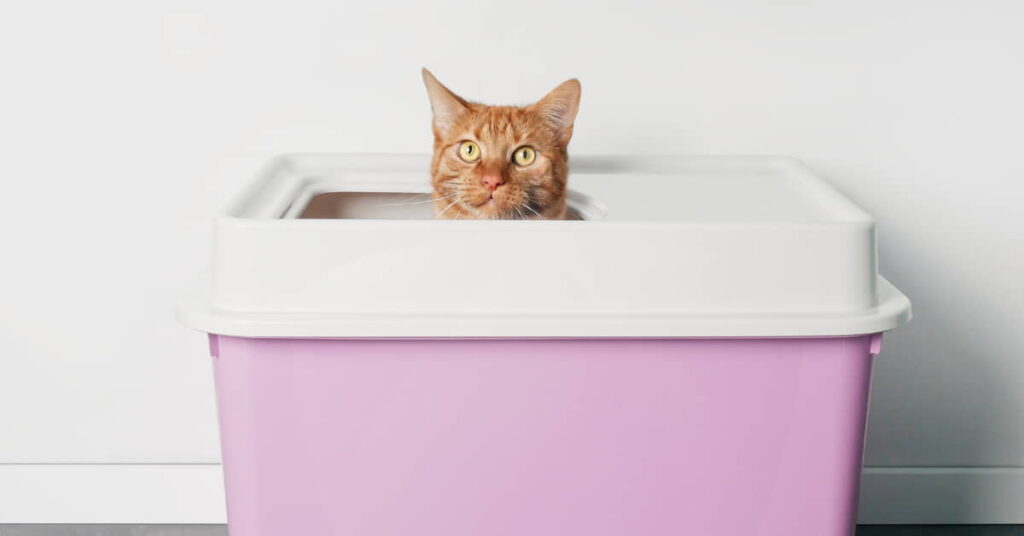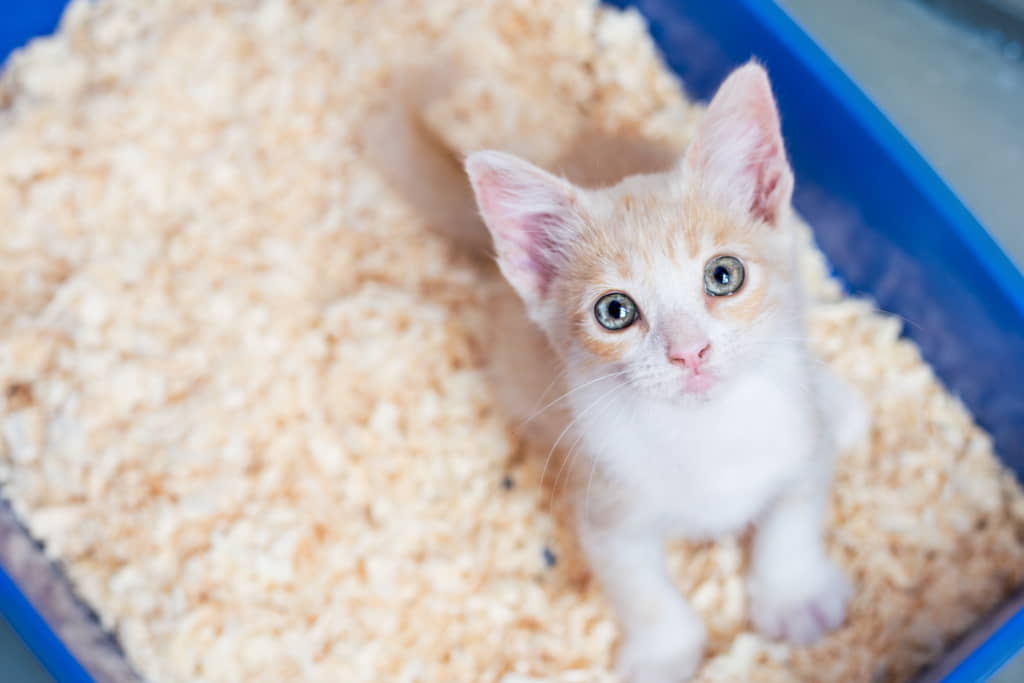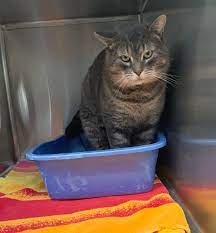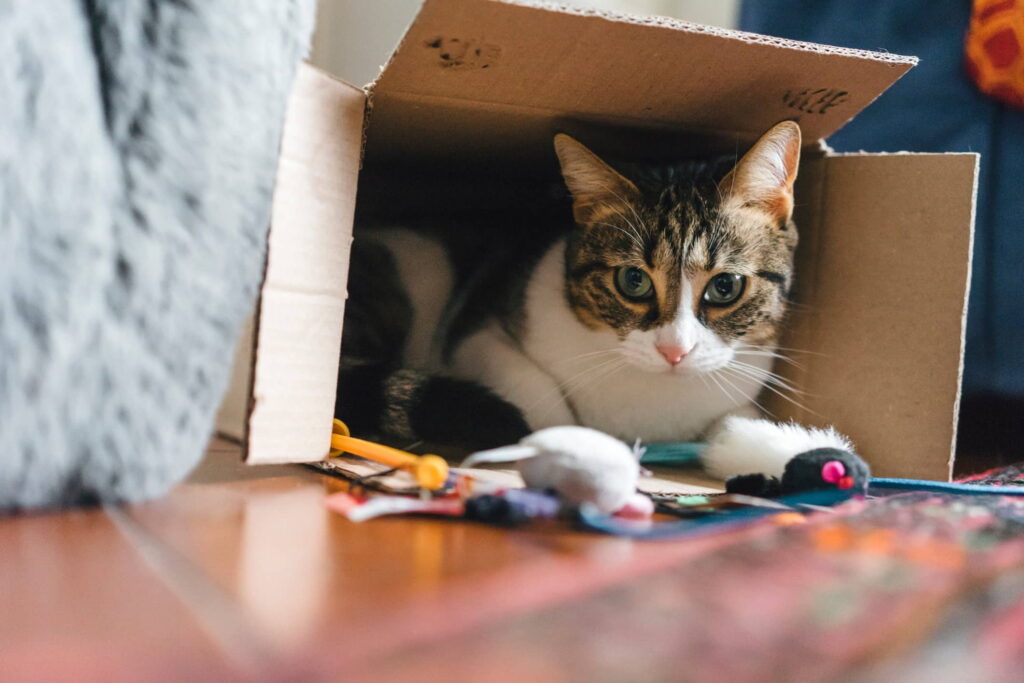Contributions from Catfoodsite.com’s FurKeeps Kickoff Ask the Experts Forum and Janice Fenichel, D.V.M
House soiling, or urinating outside the litter box, is very common. Non-medical causes, often inaccurately labeled ‘behavioral problems,’ usually are perfectly normal feline responses to an environmental stimulus and can be subdivided into urine-marking and normal voiding outside the litter box. The latter, which is the most common cause of feline house soiling, includes cases where cats may stop using the litter box because they don’t like the type of litter or the location of the box. These aversions may arise over pain from a medical problem, fear after being startled or attacked by another cat while in the box, or odor due to infrequent cleaning. A behavioral specialist can help sort out why a cat has stopped using his litter box and suggest ways to get him back to it.
In contrast, cats urine-mark objects to define territory, compete with one another and announce sexual availability. Marking is seen more in unneutered felines, in males more than in females, and in overcrowded households.
Although some cats mark with their feces, most cats mark by spraying urine. Cats normally void by squatting and releasing a medium to large puddle on a horizontal surface. When spraying, a cat stands with tail straight up and twitching and squirts a small volume of urine, usually onto a vertical surface. Because my second patient was leaving urine drops on a vertical surface – the living room drapes – it seemed likely that this was a case of marking. All of Mrs. Green’s cats were neutered, so I suspected that someone was feeling stressed by the presence of too many other cats within a small territory. Urine samples were checked on all remaining cats; all were normal.

Remedies to try
Blocking access to windows through which outdoor cats might be visible could help, as could adding additional litter boxes to the home and separating cats so each had his own space. Private space can be created even within a small apartment by adding accessible shelves high up on the walls or providing cat condos with sheltered ‘caves’ near the top.
It is essential to eliminate all traces of urine odor so as not to re-attract the offender or potentially attract other cats who might begin marking, too. I strongly recommend urine odor eliminators for this job.

The role of drugs
If the marking behavior continues after social and environmental issues were addressed, drugs might become an important part of therapy. This is true especially in long-standing situations or those with frequent occurrences. Marking behavior should be interrupted as soon as possible, as repetitive behavior can become reinforced in the mind of the cat. Drugs usually are not necessary in cases of non-marking house soiling.
Drugs prescribed to treat marking include human sedatives, anti-anxiety agents, and antidepressants. None are approved for use in cats, so their use may involve some degree of risk. Unfortunately, many cats respond only partially to medication, and almost all cats relapse once the medication is stopped. [Editor’s Note: According to our Animal Sciences department, a new product called Feliway ©, a synthetic feline facial pheromone that is sprayed in the cat’s environment, can reduce urine marking and stress.]

Behavioral Peeing
I have a cat who pees inappropriately on a towel at the back door of our house. We have tried to pick up the towel, but then she pees on the area rug that is right next to the litter box. She has also peed on a cat tree that a coworker gave me. I think it’s behavioral.
We’ve gone the antibiotic route several times and all the cats are on urinary tract formula of Hills Prescription Diet. I give them only distilled water. I tried to get them to eat canned food and she peed more frequently. Also, all my cats hated it.
I have tried every cat litter under the sun and almost every type of litter box you can imagine. The most recent one has been the most successful. We made it out of a Rubbermaid container that we cut a hole in the top of.
In the last two weeks, she’s only peed outside the litter box twice. (Usually, it’s daily, and sometimes twice a day.) The ONLY change in the last two weeks is we bought a new litter with crystals. I can’t think of any other change that has occurred.
She’s not going anywhere. I am committed to her. HELP!

Answer 1
Depending on the length of time she has been doing this, she may have learned this as behavior and you will have to retrain her. Look at your cat as an individual and see how the environment in your home may be affecting her.
Here are some things to consider:
- How long has the cat been urinating outside the box?
- How many litter boxes do you have for all your cats?
- Are they located in different places in your home?
- How do the other cats treat her? Is she picked on by the other cats?
- Do the other cats bother her when she goes to use a litter box there? The cat that is picked on may be reacting to the stress of this by inappropriate urination.
- Are you constantly bringing in foster kittens? This may be affecting her outlook.
- Aversion may be happening for various reasons but we need to observe how the cat is acting.
- Is the litter box scooped every day? She may stop using the actual box due to the odor or because she associates the box with something negative.
- It could be stress-related.
- Have you thoroughly cleaned the floor area by the box with a good cleaner to eliminate the smell?
- Have you tried Cat Attract which helps bring the cat to the box?
- On her medical check-ups, you stated she was fine so I assume no infection was found.
Debby Williams
Veterinary Services Manager, Erie County SPCA
Tonawanda, NY
Answer 2
It sounds like you have tried all sorts of things and I commend you for that! I also applaud you for being committed to this cat no matter what. I sincerely wish there were more folks like you.
Having lived through this particular problem myself, I certainly understand the frustration of dealing with it. Good for you for having visited the veterinarian first! I would guess that lots of inappropriate elimination problems in cats are caused by urinary tract infections, which can be very dangerous (deadly) if not treated quickly.
You mention that you have tried the antibiotic route twice, so I assume that there was an infection at one point or another. Yes? And I also assume that your veterinarian has now given the cat a clean bill of health while the problem persists? If not, I would absolutely head back to your veterinarian. Chronic urinary problems are not uncommon and emphatically need to be addressed before you have any hope of addressing this problem.
If, on the other hand, your cat has had a recent urinalysis and it has come back “clear,” here would be my suggestions:
- It sounds like your cat may have developed a “substrate preference” for fabric surfaces (towel/throw rug) over litter products, which, by the way, is fairly common. Can you pick up all throw rugs and towels for some period of time and move the cat tree, just so your kitty doesn’t continue to rehearse the unwanted behavior?
- You might need to separate this cat from the others for a while if you are not 100% sure she is the only culprit.
- Try adding an additional litter box, just so you can allow the cat to “vote” on what she “likes” in the way of litter box substrates. By all means, use the new litter box that seems to be working well so far — and then get another box of some type.
- Experiment with the depth of the litter (if you haven’t tried this already). In my experience, lots of cats like less litter and we humans tend to like more, which often creates a kind of “quicksand” experience for the cat. Put less litter in one box and more litter in the other and see which one the cat seems to use.
- It perhaps goes without saying (but I will say it anyway) that all litter boxes should be scooped daily at least, especially while you are trying to work through this kind of problem.
Good luck!
Sarah Babcock
Chief of Education and Training, Richmond SPCA
Richmond, VA
Answer 3
A urinalysis is critical. I am assuming a urinary diet was started due to crystals? Most middle-aged cats do not have a true “urinary tract infection” and, thus, antibiotics can fail to treat the problem.
If the urinalysis is normal, here are a few things to consider:
- Water is always a critical factor. Any canned food would be better than no canned food. We don’t want the urine to sit in the bladder for long periods of time as it allows crystals to form and is a very irritating substance anyway.
- Stress is a huge component for cats. The U.S. cat population has many more behavioral issues than our European counterparts. Some attribute this to indoor-cat boredom. Ohio State has introduced the indoor cat initiative to deal will this issue. A portion of this involves “play therapy.” In addition, you can add puzzle toys for her dry food. Also consider Feliway, a synthetic facial pheromone that helps de-stress cats. It comes in a plug-in or spray (note the spray works excellent at sites you don’t want her to scratch).
- Litter boxes are always about location, location, location.
- Drug therapy – #1 is Prozac. (Cheap, safe, efficacious)
Hope this Helps!
“Dr. Grant” Gugisberg D.V.M.
Parkview Cat Clinic
Mendota Heights, MN
Wondering about Keeping Your Cat Calm at Night? Check it out on our latest post!
